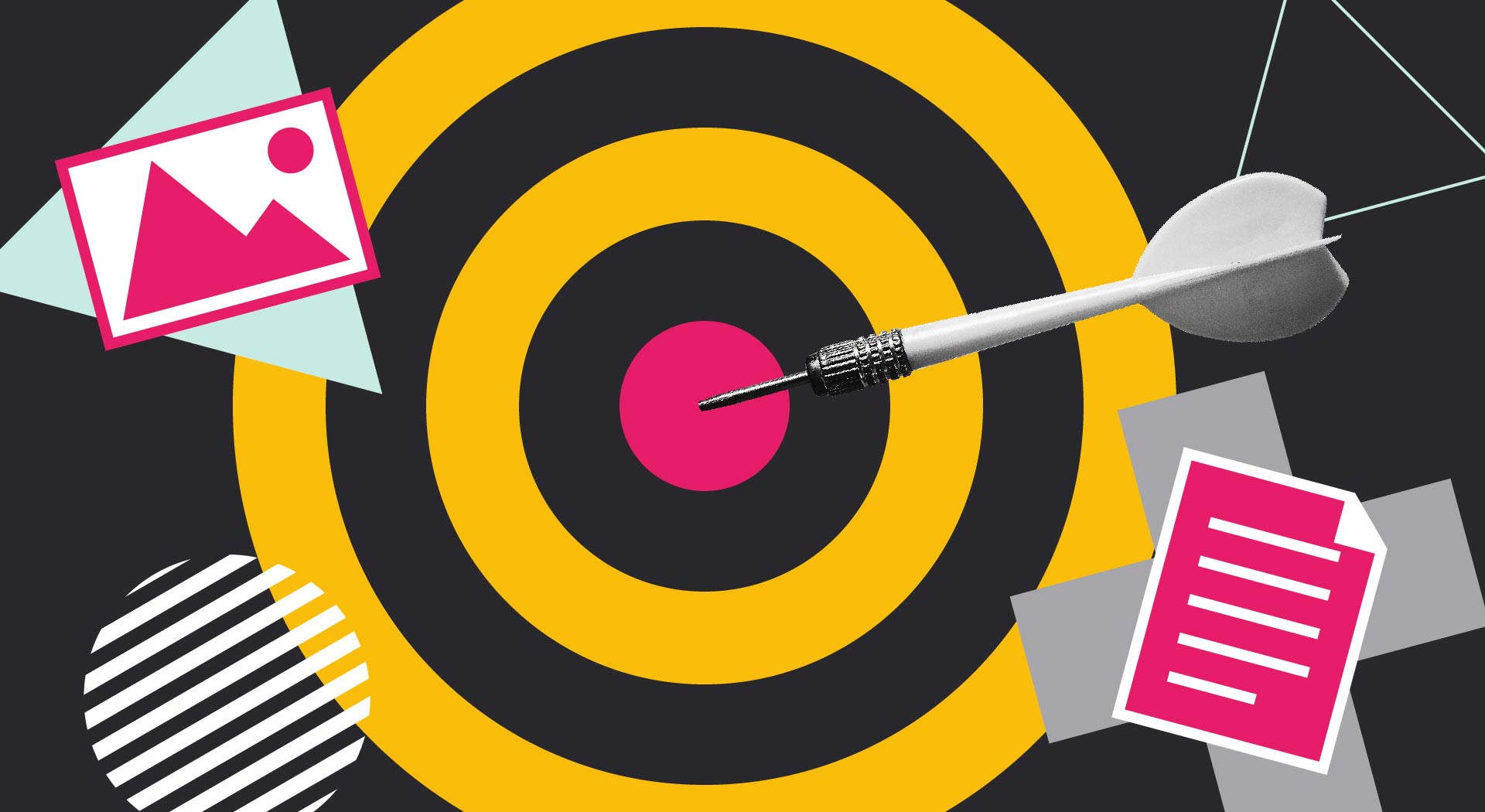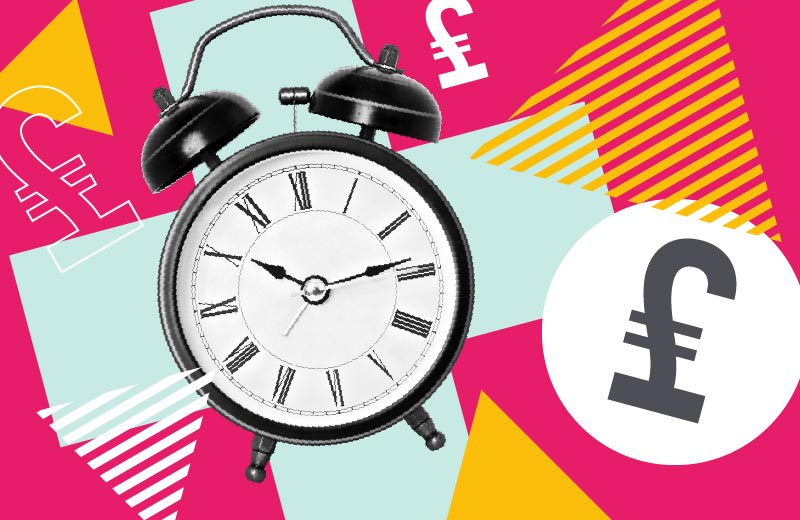

One
To kick off with a piece of general advice, regardless of what type of content you’ve been asked to supply, always allow extra time to prepare. Writing copy or obtaining images might not be your primary area of expertise so it may be wise to overestimate how much time you think you’ll need.

Images
Two
Firstly, make sure you are supplying images in the correct colour format (i.e. CMYK / RGB / Pantone – check out our Jargon busting for clients: images post for more information). This is less important for photography as designers can convert the colour format but it’s essential with logos and other elements whose colours need to reproduce consistently.
Three
Photography and illustrations need to be large enough and of sufficient quality. Read our Jargon busting for clients: images post for more information on the technical side.
Four
If the image isn’t big enough, don’t make the mistake of enlarging it to increase the pixel size. This will decrease the quality, resulting in a pixelated effect. The only way to increase the quality again would be to decrease the pixel size back to the original size! Unfortunately, if that image isn’t big enough, you’ll need to provide something else or ask your creative partner if they can help by commissioning stock photography or a professional photographer.
Five
If you do take your own photography, ensure the subject is well-lit and consider what is behind the subject – is it likely to be distracting?
Six
While smartphones do come with very good cameras, it’s important to check what settings you have for saving photos. Make sure they save as the biggest size and best quality possible.
Seven
The best practice for diagrams and charts is to ask your creative partner to recreate them for you. This is because they will be created to suit your branding style and will be high-quality for printing. If this is something you might need, let your designer know as early as possible, preferably before they quote for the job, because it can increase the time required to complete the job and therefore affect the cost.
Eight
Always send images as the image files themselves, e.g. .JPG, .TIF, .PNG. Don't paste them into Word or Powerpoint as the images may be reduced in size and quality. Getting the images out of Word and Powerpoint files also creates extra work for your designer. Ideally, give a few image options (but not too many!) so your creatives can select the ones that best suit the design.
Nine
Be aware of copyright – who owns the images you are providing? If it's not you, do you have permission to use the imagery? This is a major reason why it’s not advisable to source images from the internet. As well as being more likely to run into copyright infringement, it’s likely these images won't be the right size or quality to be used for any printed materials.
Ten
Images can be sent via email but keep an eye on file size as good-quality images tend to produce big files. Anything over about 10 Mb is ideally sent via a file transfer service such as WeTransfer or DropBox. Most creatives would prefer to receive one WeTransfer email with all the images in than multiple emails with one or two images supplied. It's also probably quicker for you to supply via a file transfer service too!

Text
Eleven
Try to be realistic about supplying the right amount of content. Providing too much or not enough copy can involve extra rounds of work for you and your creative team if you need to reduce the amount or supply more. Therefore, it’s best to aim to get it right or as close to right the first time around.
Start by being realistic about the amount of text you have. For example, if you’ve written two full pages of text in Word, it’s unlikely to fit on a postcard! That’s a bit extreme, but hopefully, you get the idea!
A general rule of thumb is to err on the side of caution and cut the text down. This is because it’s more common to supply too much text than not enough. In the event there isn’t enough text, the space can be filled with design and it’s usually easier to add to text than take some out.
The less is more approach is especially true for large format pieces like pull-up banners and exhibition stands, and to an extent on websites. We need to give people just enough info to draw them in, but not so much that they don’t need to get in touch to find out more. We want your target audience to want to find out more – this opens up a conversation with them and potentially a warm lead. Don’t fall into the trap of feeling like large format pieces, posters and covers have a lot of space and therefore need a lot of text. We shouldn’t aim to fill the piece we’re designing with text content, always allow plenty of space for design.
Twelve
Depending on the project, it may be possible to have the piece designed first, be given a word count by your designer and write the text to fit. This isn’t always ideal because word counts are approximate and in terms of the creative process, having the text first can help inspire and inform the design. However, if you have a repeat item where the design has already been done before to an extent, like a series of sales sheets or a customer magazine, using word counts can be useful.
Thirteen
Ideally, supply your text in Word or text documents. Small amounts can be sent by email. Copy can be lifted from websites but make sure it’s either your content or you have permission from whoever owns the copyright to do it – we don’t want to run into any plagiarism claims! While it is sometimes possible to extract text from a PDF, please don’t supply PDFs for text because firstly the text might actually be an image (more on that below) and even if it is selectable text, there are usually additional line spaces which need to be taken out. Editing text supplied from a PDF adds a lot of time to the project. Don’t supply text as an image as it will need to be retyped, which incurs time and opens up the possibility of typos.
Fourteen
Ensure your text content has been approved internally with all relevant stakeholders before it's sent on to your creative partner. It needs to have been proof read, spell checked and checked for factual correctness. Ideally, ask someone who hasn't had been involved in writing the content to check it. Sometimes we can become blind to errors when we've been writing as we lack perspective.
Text changes after the project has been designed can take up more time, and may mean the fee you pay is increased. Extra rounds of changes prolong the length of the project and last minute changes can mean deadlines are missed. Therefore, always aim to send as-near-as-possible final copy.

If you’re going to be late…
Fifteen
If there’s a delay in providing text or images, designs can be put together with placeholders. In this situation, your creative partner can provide a word count for you work to with your text, based on the dummy content they have used in the design. For images, your designer can let you know the size and whether square, portrait or landscape images are needed. Something to be aware of with using placeholder content is that if your supplied content doesn’t fit the design, e.g. your supplied images only work in landscape but the placeholder images are portrait, or your text significantly exceeds the word count, the layout might need to be reworked. This adds time to the job which might incur a cost. At Studio Bifrost we’ll let you know upfront if your content doesn’t fit and if there are likely to be any problems fitting it in the layout.
Sixteen
If you do think there is going to be a delay or any problems in providing content, let your creative partner know as soon as possible so they can plan around it. They may suggest using placeholders or feel free to ask if it may help progress the project.
There is another way…
Seventeen
You can always ask your design partner to source content for you.
Eighteen
A cheap option for images if ask your creative to find stock imagery. This may take some time to do, especially if you need something very specific but it can be a good way of sourcing high-quality images at a low cost.
Nineteen
If stock libraries aren’t a viable solution, consider commissioning an illustrator or photographer. At Studio Bifrost, we can provide professionals in these fields. Illustrators can create striking images completely bespoke for your needs, in particular styles. Photographers not only know how to shoot a great image but have all the necessary equipment.
Twenty
Our network of associates at Studio Bifrost also includes copywriters. They will not only write copy of the right length but ensure the content is tailored to suit your brand’s tone of voice and speak clearly to your target audience. If the copy is for your website, a copywriter can ensure the text contains keywords so it is picked up by search engines, but written in such a way that the inclusion of those keywords feels natural and is still enjoyable to read by your human target audience.
If you source these services through your design partner, they do come at a cost and you will need to provide some input to get the copywriter, photographer or illustrator started. However, you'll be commissioning experts with the experience and necessary equipment and saving yourself time. In addition, the content created will be uniquely yours and tailor-made for your brand.

A partnership made in heaven?
Feeling inspired? We'd love to help! We are a team of collaborators that enjoy nothing more than partnering with ambitious clients. Get in touch if you'd like to talk through your next project or get some advice.



